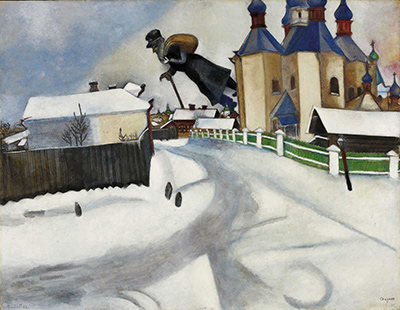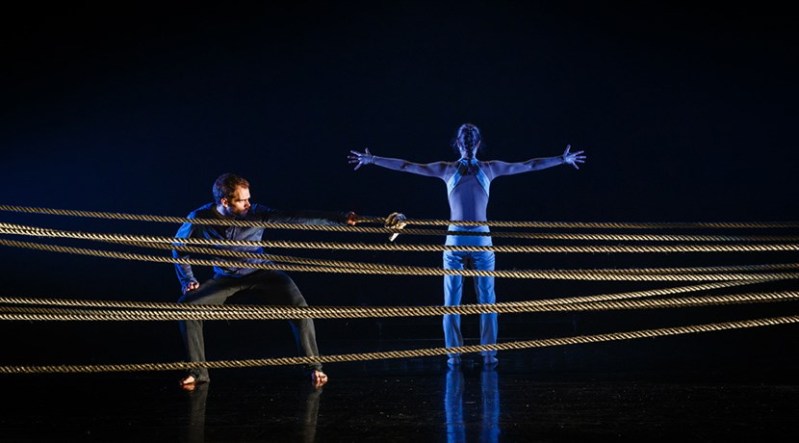by Nelsen Durkee
Facts and figures related to Cardboard Citizens and their work were collated from their official website and related articles. If you are interested in reading more on them, click on the following link. https://cardboardcitizens.org.uk/
As one of the leading practitioners of the Theatre of the Oppressed methodology in the UK, Cardboard Citizens theatre company has worked to tackle the issues of homelessness for the last 25 years. Ali Taylor, writer of Cathy, said that “we need to recognize that homelessness can strip people of their self-respect and mental health.” This is precisely what Cardboard Citizen addresses.
The theatre company, exclusively consisting of members who have experienced homeless in one shape or form, empowers those affected by the issue to understand and change their situation. Those not directly affected by the UK housing crisis, gain a personal insight into the convoluted nature it.
“Cardboard Citizens tells stories that need to be told, through theatre performed on stage, in the streets, in hostels, centres and prisons”. The theatre company provides a format and space for individuals to develop their skills and confidence through projects, workshops but also forum theatre; the format that Cathy took.
The special thing about Cathy and the other forum theatres tours from Cardboard Citizens is that the audience doesn’t just need to sit back and let the story unfold. They get to act. The performance we saw at mac Birmingham (https://macbirmingham.co.uk/ ) was one of the stops on the UK wide tour of Cathy ending February 2017. Based off and inspired by Ken Loach’s Film Cathy Come Home, aired 50 years ago, Cathy reflects on the “social and personal impact of spirally housing costs”, “gentrification” and the “challenges of the forced relocation away from London”.
In the first half of the evening, we got to see the play itself. Fueled by real-life testimonies on the housing crisis, the play was an emotional downward spiral for Cathy and her 16-year-old daughter Dannielle. Following them from the conviction of their original home, all the way to couch and bus surfing, insecure, run-down, and temporary tenements, emotionally raw and desperate fights, it led to the eventual conciliation between the downtrodden, but hopeful mother and burdened yet coping daughter. Characterized by negative turn after negative turn, this was a truly hear-breaking play to watch.
After this emotional rollercoaster for the audience, there was an intermission, which was more than necessary after the events that we saw unfold, followed by the second half of evening: the forum. As I said earlier, this is where the audience got to act. After short round of feedback from individual audience members and resulting discussions, we were prompted to put our suggestions for the betterment of Cathy into action. The actors on stage let the story unfold again, but this time we could intervene with a determined “STOP!”, giving us a chance to get up on stage to enact our suggestions for an improved course of the story. This I think was the critical stage for these performances.

To bring a personal note into this piece: even though the play’s progression fascinated me, with a desire to learn more about the situation and excited for the chance to intervene in a negative spiral, I still felt powerless and out of place. Here was a situation, from my perspective as an undergraduate Liberal Arts and Science student studying abroad with a privileged family background, where I felt I shouldn’t even pretend to know anything about the issue. I didn’t even know where to start to try and intervene. The thing was though, that wasn’t the point at all.
The point of Cathy was that we were given the chance to rehearse important life decisions that Cathy had to make. We got a chance to be somewhat of a think-tank for alternative courses of actions. We could set high standards for people and how they could improve their lives. We didn’t need to have the answers, but we did need to show initiative. Some ideas were received better than others, some people came from a more experienced background and could give more information than others, but in the end, viable alternatives to life choices were given. The audience made progress.
To bring in more of a Liberal Arts and Science perspective: here was a group of people from vastly different walks of life coming together to try and enact change for an issue that required more than one solution. It’s hard, but it’s possible. Here was a theatrical performance that affected and improved our perspective on a social, political, and economic issue. The forum theatre of Cathy was interdisciplinarity and cross-boundary problem solving at work and it was conducted in an emotionally vulnerable yet polished format. I’m glad that we got to see this performance and widen our horizons on issues for which we can realistically enact change. It was a truly gripping evening.
Contributed by Nelsen Durkee, 1st year LANS student majoring in Geography.
Here are some testimonials from other LANS students on the evening:
Richard William, 1st year LANS student majoring in Political Science.
Cardboard Citizens: Cathy’s tale I have never witnessed a format of theatre quite as engaging and enriching as this. A stimulating topic followed by active intervention in order to stimulate change, followed by discussion and law-making with the aim of proposing change is one of the most interesting forms of political movement that I’ve ever been exposed to. As someone who wishes to reform the political system and in doing so give people more of a voice, I felt that this experience unlocked a closed door behind which lay ideas on creative opportunity for listening to what the people want.[…]
Behind each person is a story, a story which is different, a story which carries with it human suffering at the hands of neglect.[…]
The set was simplistic and yet functional; each piece had its purpose […]
The evening left many feeling united behind the desire to see change, which, in a world of seemingly increased division and pain, is much needed. I would go back time and time again to this style of performance, for even if the script was the same, the response wouldn’t be, and I found the response almost more enriching and engaging than the performance, as it changed the theatre experience from one of passivity where one watches scenes unfold, to one of activeness, allowing for change to occur.
Lizzie Rowland, 2nd Year LANS student majoring in History
I first witnessed the uncontrollable spiral into desperation when I watched Cathy come home. However, I would never imagined the impact seeing the same thing in a modern day context (and on stage rather than screen) would have. I thought the message was more than powerful -scary and moving. The play made me seriously reassess my political understanding (something I thought up until that night I New quite well).
Alice Heaps , 1st LANS student majoring in Philosophy
for her blog, check at: https://justonesecondalice.wordpress.com/2017/01/22/cardboard-citizens-cathy/
“As a performance, this play was beautifully arranged and seamlessly executed with a multi-role cast who switched incredibly between situations and characters to make the story feel incredibly real.”
“As a usually helpless audience, the chance to get up on stage and take the places of the characters and fix things for Cathy had a great element of catharsis to it. It seems that Cathy had more options available to her than she realised at the time and, although heartbreaking to see so clearly where she made the mistakes that landed her into homelessness, the solutions provided by the audience highlighted a running theme of education and thorough-thinking as being necessary to preventing such difficult events occurring”
“Experiencing this play both as an individual situation and a representation of the struggles faced by so many people across the country and the world, it hit me just how ordinary the people in the story really were. I like to think of myself as somebody understanding to the situations of others and I make a point not to judge homeless people and help them if I think I can, but even I will admit that it becomes difficult to not assign stereotypes in some situations. Maybe the most important thing that this experience showed me was that something needs to be done from both within the system, to prevent people becoming homeless so easily, but also from outside the system – there needs to be a change in response towards homeless people.
Some of the responses from the audience were worded in a way that made it clear that views remain divided by ‘us’ and ‘them’ with the latter being people without a stable home, I think that there is something fundamentally wrong with this response and that, while changing legislation can be difficult failure-ridden, a change in attitude is something that everyone can do within themselves to help the situation: there is no us and them, we are all people and we all deserve shelter, food, water, warmth and most importantly compassion”





 rtrayed through a remarkable flow of capoeira, martial arts and stunningly athletic dance. The result is hard to put into words. The stark lighting, making use of black and white, with rare flashes of yellow, the arresting artistry and deft expression of the dancers, accompanied by a moving electro-rock soundtrack by the Polish prog band
rtrayed through a remarkable flow of capoeira, martial arts and stunningly athletic dance. The result is hard to put into words. The stark lighting, making use of black and white, with rare flashes of yellow, the arresting artistry and deft expression of the dancers, accompanied by a moving electro-rock soundtrack by the Polish prog band  Every dancer was perfectly poised, panther-like in their bounce and stealth, radiating strength and artistry in a way that I could never have expected when I settled into my seat that evening. The performance was creative and innovative in every aspect. There were times when they were all linked together and sailed over and under one another in a way that did not seem possible, even as they proved me wrong. The James Wilton Dance company gave us something unique, something startling, something powerful.
Every dancer was perfectly poised, panther-like in their bounce and stealth, radiating strength and artistry in a way that I could never have expected when I settled into my seat that evening. The performance was creative and innovative in every aspect. There were times when they were all linked together and sailed over and under one another in a way that did not seem possible, even as they proved me wrong. The James Wilton Dance company gave us something unique, something startling, something powerful.
 This was a concert of two halves. In the first part, mostly minor keys, it was like you came out of a sauna, and your sound was sweaty, cloggy, like emerging from a treacle, notes were overdone, and were bursting with emotional loading – where Bach is something else, a pure crystal of music.
This was a concert of two halves. In the first part, mostly minor keys, it was like you came out of a sauna, and your sound was sweaty, cloggy, like emerging from a treacle, notes were overdone, and were bursting with emotional loading – where Bach is something else, a pure crystal of music.




